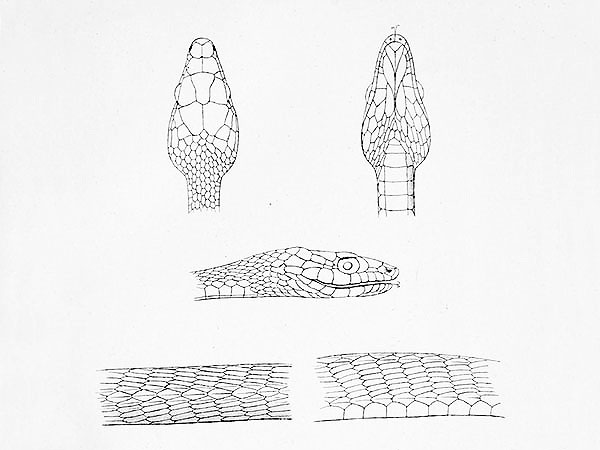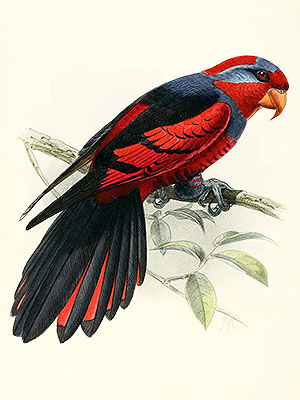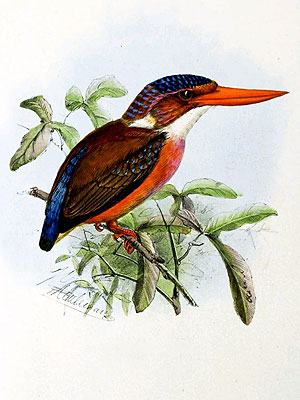Sangihe Flying Snake (Chrysopelea rhodopleuron ssp. viridis)
The Sangihe Flying Snake was described in 1880 from a single specimen which was subsequently destroyed during World War II; it was originally described as a distinct species. This form was apparently restricted to the island of Sangihe, the largest of the Sangihe Islands, Indonesia (not Sulawesi as is often stated).
The snake reached a length of 1,4 m, it was bright green above and slightly paler below, parts of the head were yellowish colored. [1]
The status of this form is not known but it appears to be extinct.
*********************
References:
[1] J. G. Fischer: Neue Amphibien und Reptilien. Archiv für Naturgeschichte 215-227. 1880
*********************

Depiction from: ‘J. G. Fischer: Neue Amphibien und Reptilien. Archiv für Naturgeschichte 46(1): 215-227. 1880′
(not in copyright)
*********************
edited: 19.08.2022


